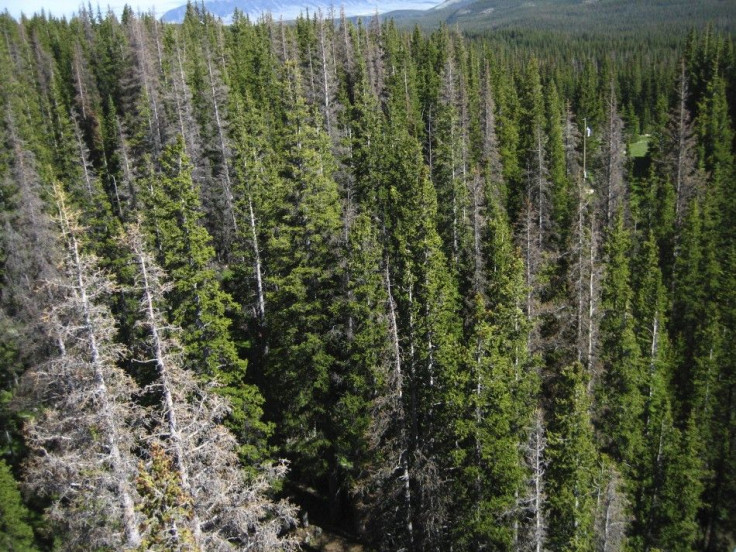Pine Beetle Epidemic Slows in Rocky Mountain Region

An epidemic that has been slowly eating away at the Rocky Mountain pine tree population appears to be slowing in some areas, according to the latest aerial survey.
The joint federal-state survey, which measured pine beetle infestation in Colorado, Wyoming, South Dakota and Nebraska, found declining levels of infestation, especially in Colorado and southern Wyoming. In those two states, the ones most affected by the infestation, the number of acres of infected or felled trees dropped by 127,000 since 2010. To date, Colorado has 3.3 million affected acres.
Cumulatively, the numbers of trees affected by the beetle between 1996 and 2011 dropped by 208,000 acres. An acre is considered affected when trees there have either died from, are fighting or have survived the pine beetle epidemic.
The pine beetle is just that -- a beetle that feeds on pine trees. Female beetles burrow inside the pine tree's bark, carving a small gallery. They then alert other beetles to the tree's existence, and before too long male pine beetles end up mating with the females. The females lay eggs and when the larvae hatch, they eat the tree's insides, waiting to mature, before leaving and colonizing a new tree.
Bob Cain, Rocky Mountain regional entomologist with the USDA Forest Service, said thousands of pine beetles can attack a single tree.
It is a snap shot in time that is very dramatic, Cain said of the infestation, who added the beetles are profiting now from a very distinct set of circumstances.
Most of Colorado's tree cover, Cain said, dates from the late 1800s, meaning the vast majority of trees are relatively the same age and size. As the trees grew, they started competing against one another for sunlight and nutrients. The more the trees competed, the weaker they became, and by the early 2000s a prolonged drought weakened the trees, making them vulnerable to the pine needle.
It's a banquet table for them, Cain said, who added the region will likely not see this type of infestation for another 100 to 150 years.
But there is some good news; the infestation is slowing because beetles have killed off many of the biggest, most attractive, trees.
As a result, the beetles are spreading to lower elevations, and Steve Segin, a spokesman for the Forest Service.
The tricky part now for state and forest service officials is getting rid off all the dead trees before they fall on unsuspecting hikers.
Trees that have succumbed to the pine beetle epidemic are not immediately recognizable because their normally green needles take six months to turn red or brown, indicating they are dead, Boyd Lebeda, a fire behaviorologist with the Colorado State Forest Service, said.
Cain said certain parts of the forest are starting to get to that point, prompting forestry crews to clear 12,000 acres of dead trees from trails and roadways.
As devastating as the epidemic has been, the trees are expected to recover and recolonize tracts of mountain side that sustained a lot of damage in the wake of the beetle.
© Copyright IBTimes 2024. All rights reserved.




















